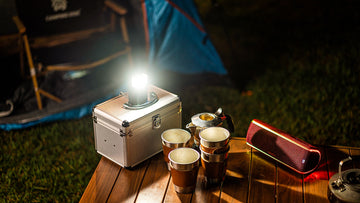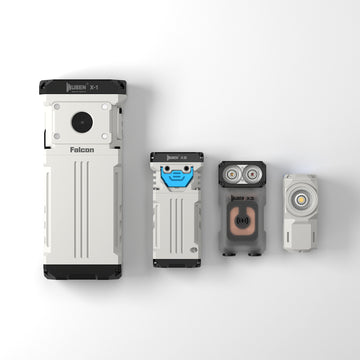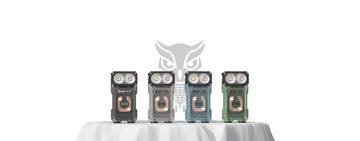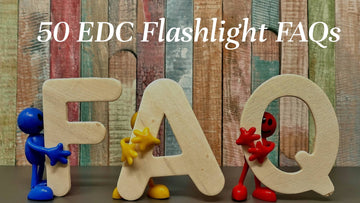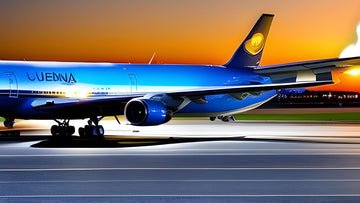
Flashlights are valuable tools that provide illumination and a sense of security, particularly during travel. Whether you're an adventurer exploring new places or a frequent flyer navigating unfamiliar airports, having a reliable flashlight on hand can be beneficial. To guarantee a trouble-free flight, it's crucial to be aware of the rules governing the carrying of flashlights on airplanes. Here, we'll investigate the query, "Can you bring a flashlight on a plane?" and provide insights into the guidelines set by airlines and regulatory authorities.
Flashlights are often allowed in both carry-on and checked baggage, according to the TSA's list of forbidden items. It's crucial to remember that some flashlights could contain particular characteristics or accessories that could be regarded as forbidden products. To avoid any issues at security checkpoints, it's advisable to review the guidelines for carrying flashlights and ensure that your flashlight complies with the given restrictions.
To ensure a safe journey, it's important to adhere to the TSA's guidelines regarding battery types and quantities. Avoid packing damaged or loose batteries, as they can pose safety risks. Additionally, consider keeping batteries in their original packaging or using protective cases to prevent accidental short circuits.
Most flashlights fall within the acceptable size limits for carry-on baggage. However, it's crucial to ensure that your flashlight meets the specified dimensions to avoid any complications during security screenings. Pay attention to the overall length, width, and height of your flashlight, including any protruding attachments or features.
When packing your flashlight, it's important to do so securely to prevent accidental activation and damage during transit. Remove batteries or use a method to prevent the flashlight from turning on unintentionally, such as disengaging the battery contact or utilizing a lockout mechanism, if available. Additionally, consider protecting the lens and delicate components to prevent any potential damage.
Additionally, there are exemptions for people with disabilities or medical issues that call for the use of a torch. It's important to note that these exceptions may require proper documentation or notification to the airline or TSA. If you fall into any of these categories, ensure that you have the necessary supporting documentation and contact the airline in advance to understand any specific procedures or requirements.
For a hassle-free trip, adherence to these exceptions and unique circumstances is essential. It's essential to follow the guidelines provided by the TSA and communicate any special circumstances to the relevant authorities to avoid any misunderstandings or complications during security checks.
In conclusion, bringing a flashlight on a plane is generally permitted, but it's important to understand and adhere to the regulations set by airlines and the TSA. Familiarize yourself with the specific guidelines for carrying flashlights, including any restrictions on battery types and quantities. Ensure that your flashlight meets the size and design limitations imposed by carry-on baggage regulations.
Properly packing your flashlight and taking necessary precautions, such as removing batteries or using lockout mechanisms, will help prevent accidental activation and damage. It's also crucial to be aware of any exceptions or special cases that may apply to military personnel, law enforcement officers, or individuals with medical conditions or disabilities.
By following these regulations and guidelines, you can bring your flashlight on board and enjoy the convenience, safety, and peace of mind it provides during your travels. Remember to review the latest regulations before your trip and always comply with the instructions given by airline staff and security personnel. Safe travels!
TSA Regulations
The Transportation Security Administration (TSA) is responsible for maintaining safety and security in air travel. As part of their efforts, they have established a list of prohibited items that passengers are not allowed to bring onboard. When it comes to flashlights, it's crucial to be aware of the specific regulations outlined by the TSA.Flashlights are often allowed in both carry-on and checked baggage, according to the TSA's list of forbidden items. It's crucial to remember that some flashlights could contain particular characteristics or accessories that could be regarded as forbidden products. To avoid any issues at security checkpoints, it's advisable to review the guidelines for carrying flashlights and ensure that your flashlight complies with the given restrictions.
Battery Considerations
Flashlights often rely on batteries for power, and it's crucial to consider the battery regulations when packing your flashlight for air travel. The TSA allows the most common types of batteries, such as alkaline, lithium, and nickel-metal hydride batteries, in both carry-on and checked baggage. However, there are quantity limits for spare batteries, particularly lithium batteries, due to safety concerns.To ensure a safe journey, it's important to adhere to the TSA's guidelines regarding battery types and quantities. Avoid packing damaged or loose batteries, as they can pose safety risks. Additionally, consider keeping batteries in their original packaging or using protective cases to prevent accidental short circuits.
Size and Design
In addition to battery considerations, size and design restrictions play a significant role in determining whether you can bring a flashlight on a plane. Carry-on baggage limitations set by airlines and security regulations determine the maximum dimensions of items allowed onboard.Most flashlights fall within the acceptable size limits for carry-on baggage. However, it's crucial to ensure that your flashlight meets the specified dimensions to avoid any complications during security screenings. Pay attention to the overall length, width, and height of your flashlight, including any protruding attachments or features.
When packing your flashlight, it's important to do so securely to prevent accidental activation and damage during transit. Remove batteries or use a method to prevent the flashlight from turning on unintentionally, such as disengaging the battery contact or utilizing a lockout mechanism, if available. Additionally, consider protecting the lens and delicate components to prevent any potential damage.
Exceptions and Special Cases
There are exceptions and specific instances to take into account, even though the general rules apply to the majority of tourists. Military and law enforcement personnel may have specific guidelines due to their professional requirements. For example, certain tactical flashlights are designed specifically for law enforcement and may have additional features that are subject to specific regulations.Additionally, there are exemptions for people with disabilities or medical issues that call for the use of a torch. It's important to note that these exceptions may require proper documentation or notification to the airline or TSA. If you fall into any of these categories, ensure that you have the necessary supporting documentation and contact the airline in advance to understand any specific procedures or requirements.
For a hassle-free trip, adherence to these exceptions and unique circumstances is essential. It's essential to follow the guidelines provided by the TSA and communicate any special circumstances to the relevant authorities to avoid any misunderstandings or complications during security checks.
In conclusion, bringing a flashlight on a plane is generally permitted, but it's important to understand and adhere to the regulations set by airlines and the TSA. Familiarize yourself with the specific guidelines for carrying flashlights, including any restrictions on battery types and quantities. Ensure that your flashlight meets the size and design limitations imposed by carry-on baggage regulations.
Properly packing your flashlight and taking necessary precautions, such as removing batteries or using lockout mechanisms, will help prevent accidental activation and damage. It's also crucial to be aware of any exceptions or special cases that may apply to military personnel, law enforcement officers, or individuals with medical conditions or disabilities.
By following these regulations and guidelines, you can bring your flashlight on board and enjoy the convenience, safety, and peace of mind it provides during your travels. Remember to review the latest regulations before your trip and always comply with the instructions given by airline staff and security personnel. Safe travels!
Related Articles

